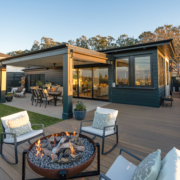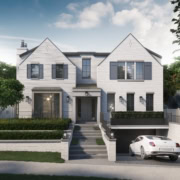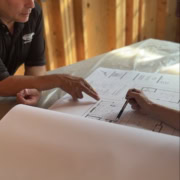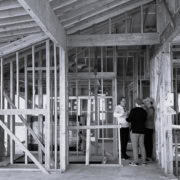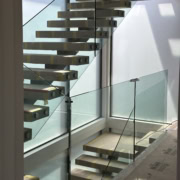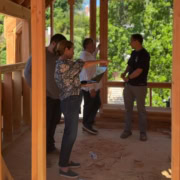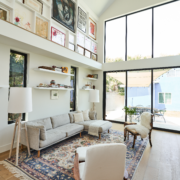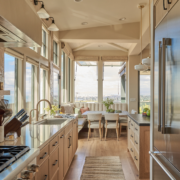Ensure the Perfect Home for Hosting with Custom Home Construction
From holiday gatherings to summer pool parties, hosting loved ones in your home is a joyous time for many. However, when throwing previous parties, you may have noticed some areas in your home that aren’t as conducive to hosting.
From limited pantry storage to inefficient kitchen layouts, there can be many factors hindering the perfect hosting experience. However, with custom home construction, you can design and create the ideal space for hosting and entertaining year-round. Here are five of the most common hosting challenges and how custom home construction can help solve them.
1. Inadequate Pantry Space
One of the biggest frustrations when preparing for guests is not having enough pantry storage. From storing extra food and drinks to finding space for pots and pans, a lack of storage can make hosting a chaotic experience. Nothing is worse than having to run to the grocery store at the last minute because you didn’t have enough storage for your Thanksgiving dinner or pool party snacks!
With new home construction, you can design a pantry space that fits your hosting needs. From built-in shelves and cabinets to walk-in pantries, you can have ample space to store all your hosting essentials. Custom pantries can also be designed to match the overall design of your home, adding both functionality and beauty to your space.
2. Compact Guest Rooms
It’s common to have overnight guests during long weekends and throughout the holiday season. However, if your home lacks adequate guest rooms, it can be a challenge to accommodate everyone. You may find yourself setting up air mattresses in your living room or squeezing multiple people into one room.
Custom home construction, on the other hand, allows you to design as many guest rooms as you think you’ll need. You can also make them as large as you want, so guests will have ample space to spread out and make themselves at home. Whether it’s a spare bedroom or a separate guest house, you can create a welcoming and comfortable space for your guests to stay. You can even incorporate features such as en-suite bathrooms, ensuring your guests have their own private space.
3. Impractical Dining Rooms
The dining room is often the centerpiece of dinner parties and family gatherings. However, if your dining room is small or lacking functionality, it can make hosting much more challenging. From finding space for everyone to sit to having enough room to serve and enjoy a large meal, a dysfunctional dining room can hinder the overall hosting experience.
With custom home design, you can choose the layout, size, and design elements that best suit your hosting needs. You can also ensure that the dining room is close to the kitchen, optimizing the flow of your home’s party space. Custom features such as a built-in buffet or large farmhouse table can also elevate the dining experience for your guests.
4. Space-Conscious Kitchens
The kitchen is the heart of the home, and this is especially true when hosting guests. During a birthday party, dinner party, or holiday gathering, you may find yourself spending most of your time in the kitchen preparing food and beverages. When this happens, guests also tend to congregate in and around the kitchen, making it a crowded area of the house.
A crowded and outdated kitchen can make hosting much more difficult than it needs to be. Limited counter space, outdated appliances, and poor flow can all contribute to a stressful hosting experience. With custom home construction, however, you can design your dream kitchen and optimize it for your hosting needs and personal style.
Choose the size and layout of the space, and select high-end appliances that you’ll use throughout the year. Custom features like built-in wine fridges, spacious islands, and custom cabinetry can also add further functionality and elegance to your kitchen space.
5. No Space for Underfoot Pets
For many people, pets are an important part of the family and often join in on all the celebrations. However, if your home doesn’t have sufficient space for your pets to roam freely, it can cause stress and discomfort for both you and your furry friends. This is especially true if you have guests who may not be used to having pets around.
Working with custom home builders allows you to incorporate pet-friendly spaces into your home. From adding a designated, gated pet area to choosing materials that are resistant to pet stains and scratches, you can create a safe and comfortable space for your pets to enjoy during family get-togethers.
Hosting can be a stressful task, especially if your home is not suited for it. However, with custom home construction, you can easily create the ideal space for hosting and entertaining. Don’t let your home hold you back from creating unforgettable memories with your loved ones. By working with industry-leading custom home builders like C&C Partners, you can ensure the perfect home for all of your hosting needs. Since 1987, C&C Partners has committed to an unwavering standard of excellence and top-tier client satisfaction that has helped us stand above the rest and remain Southern California’s premier custom home designer. If you want to experience the C&C Partners difference for yourself, contact us online or give us a call at 310-322-0803 today.

